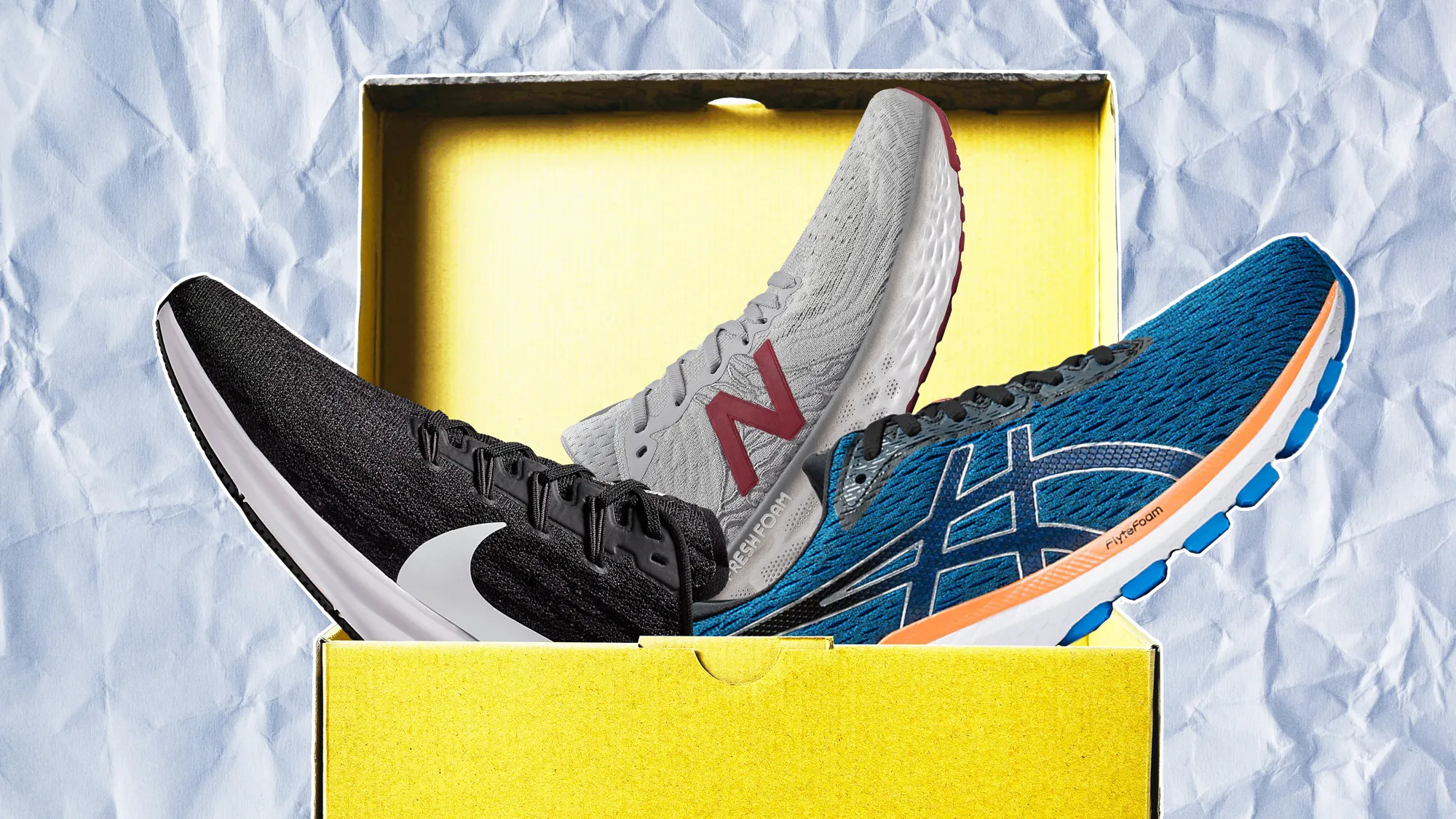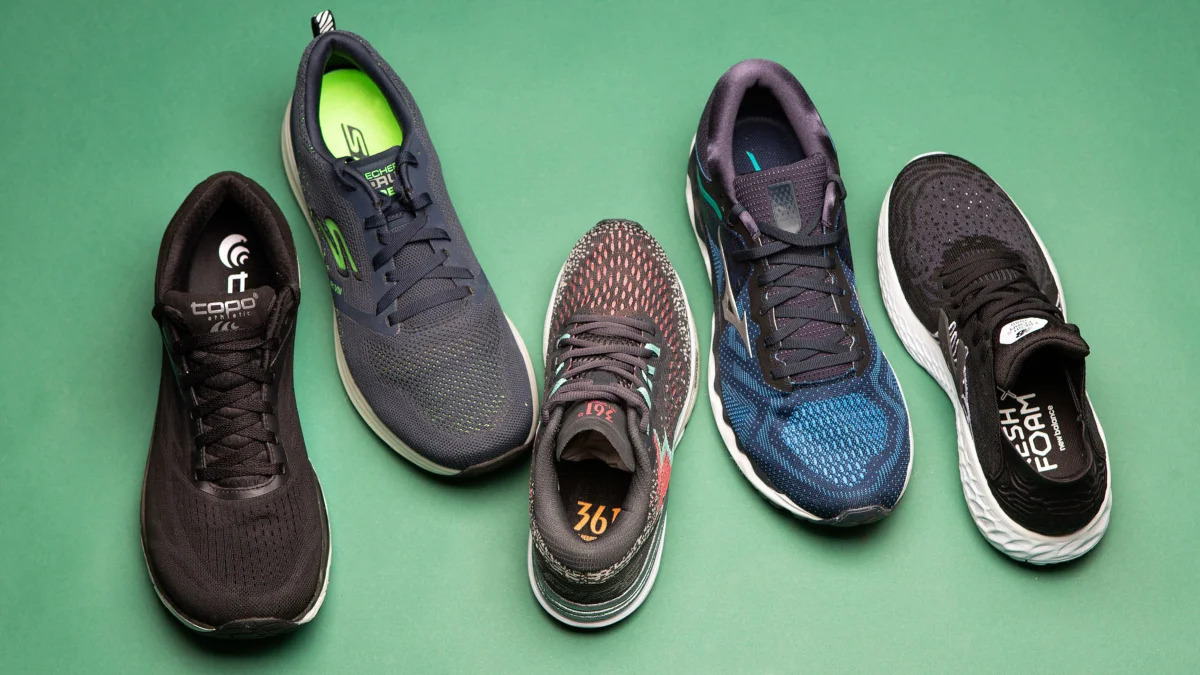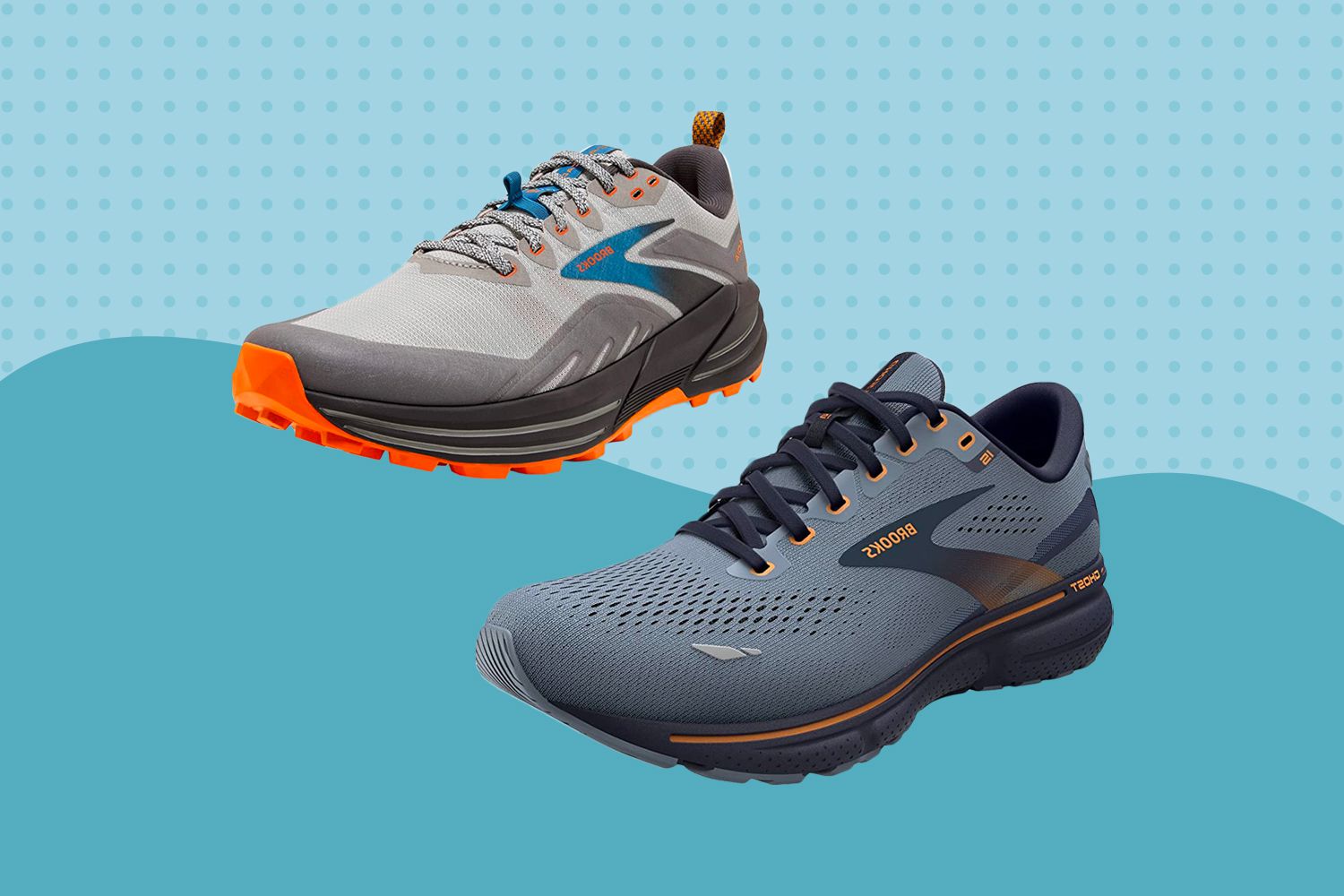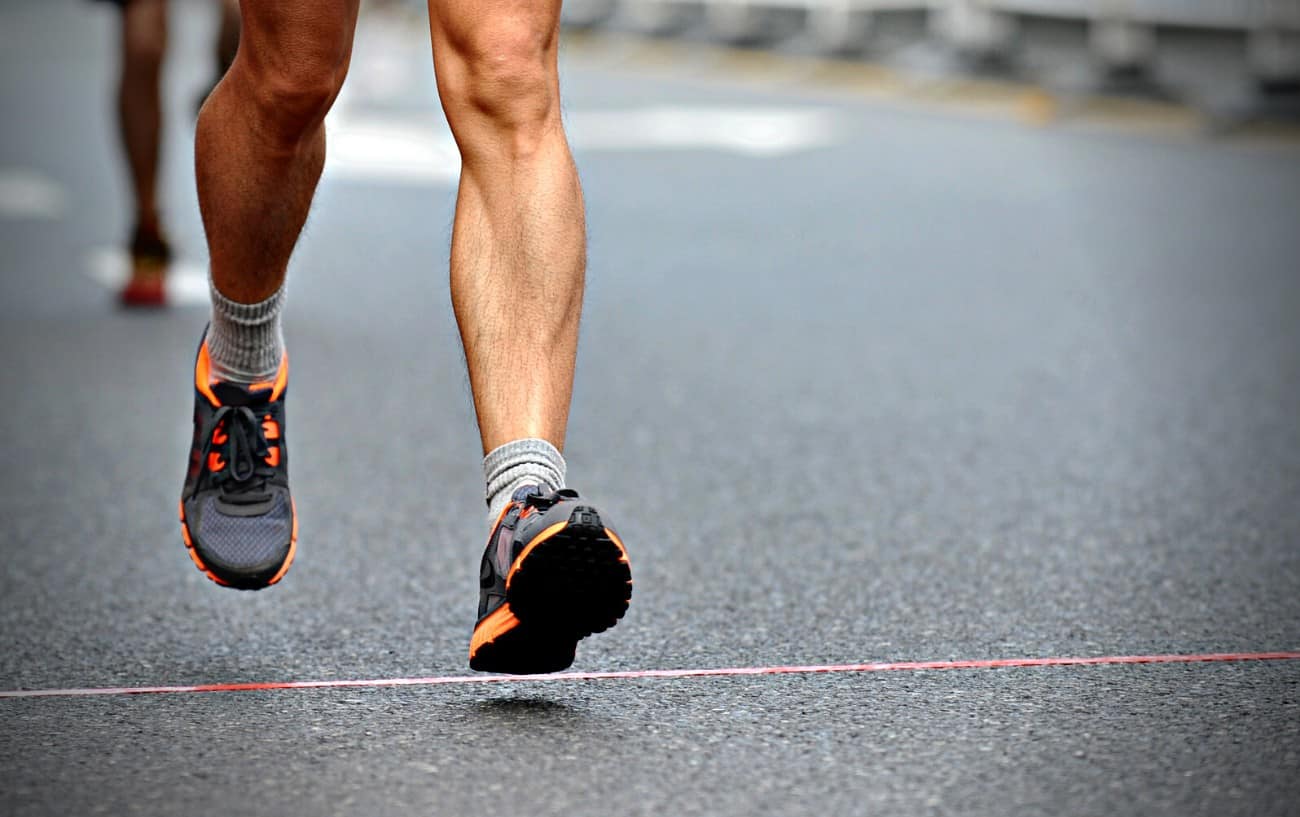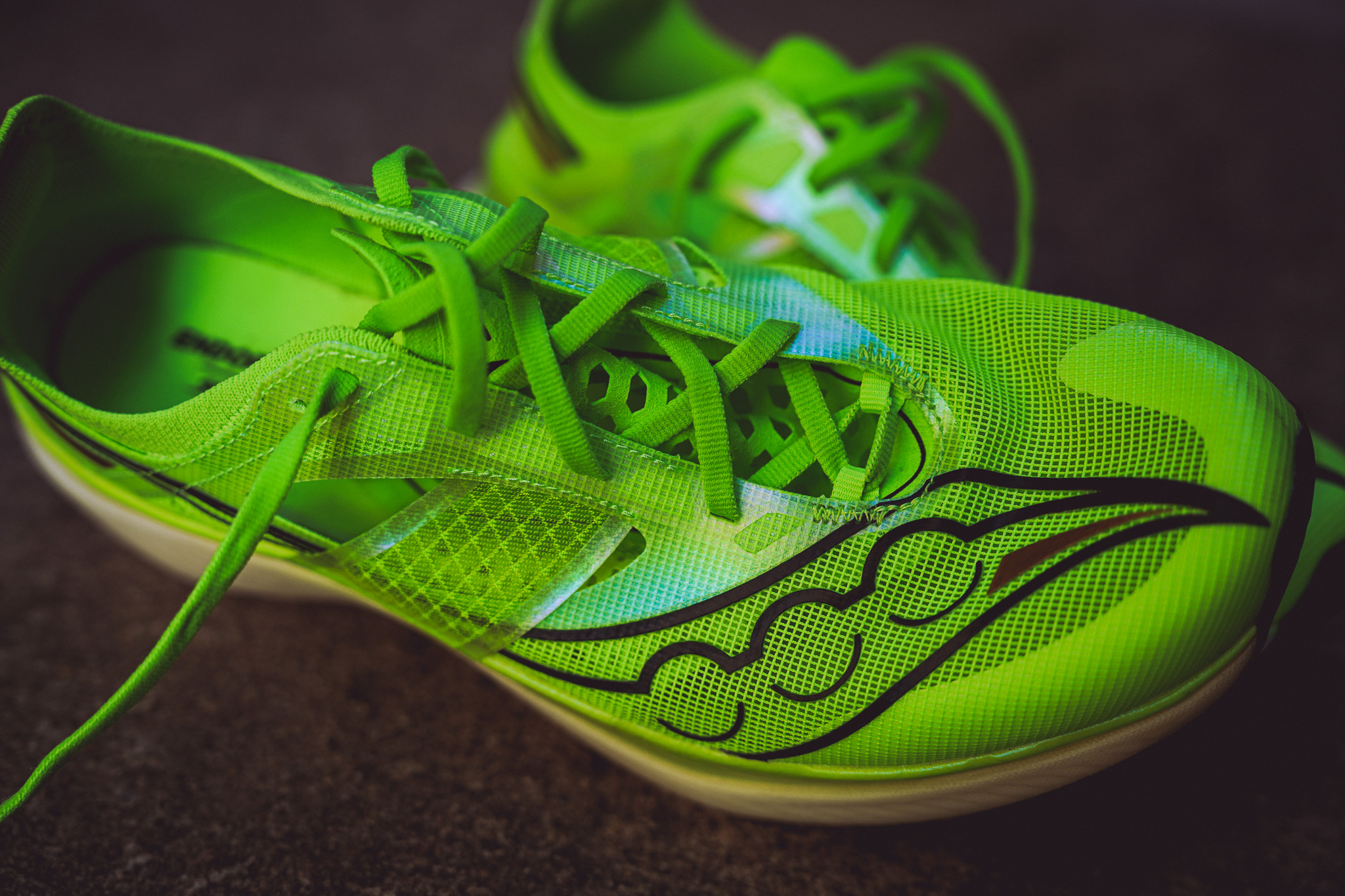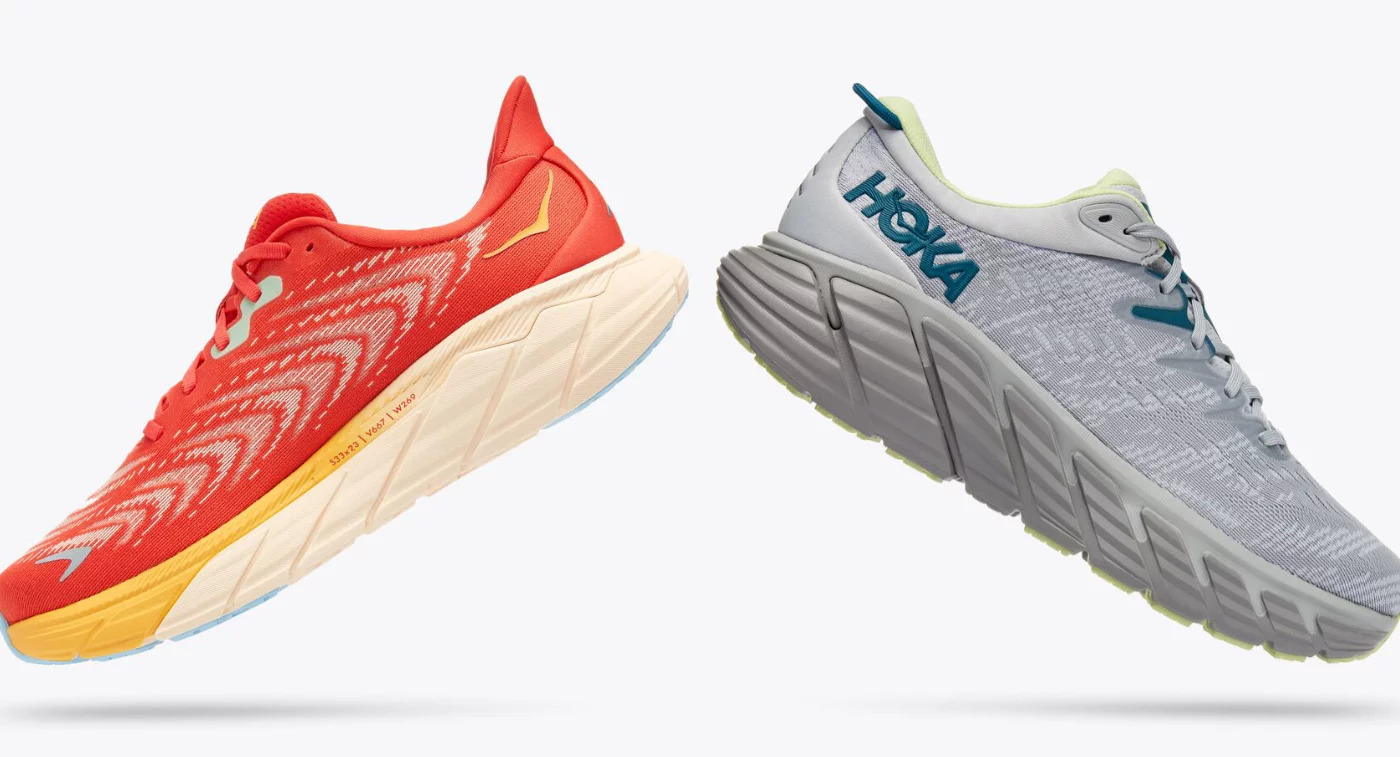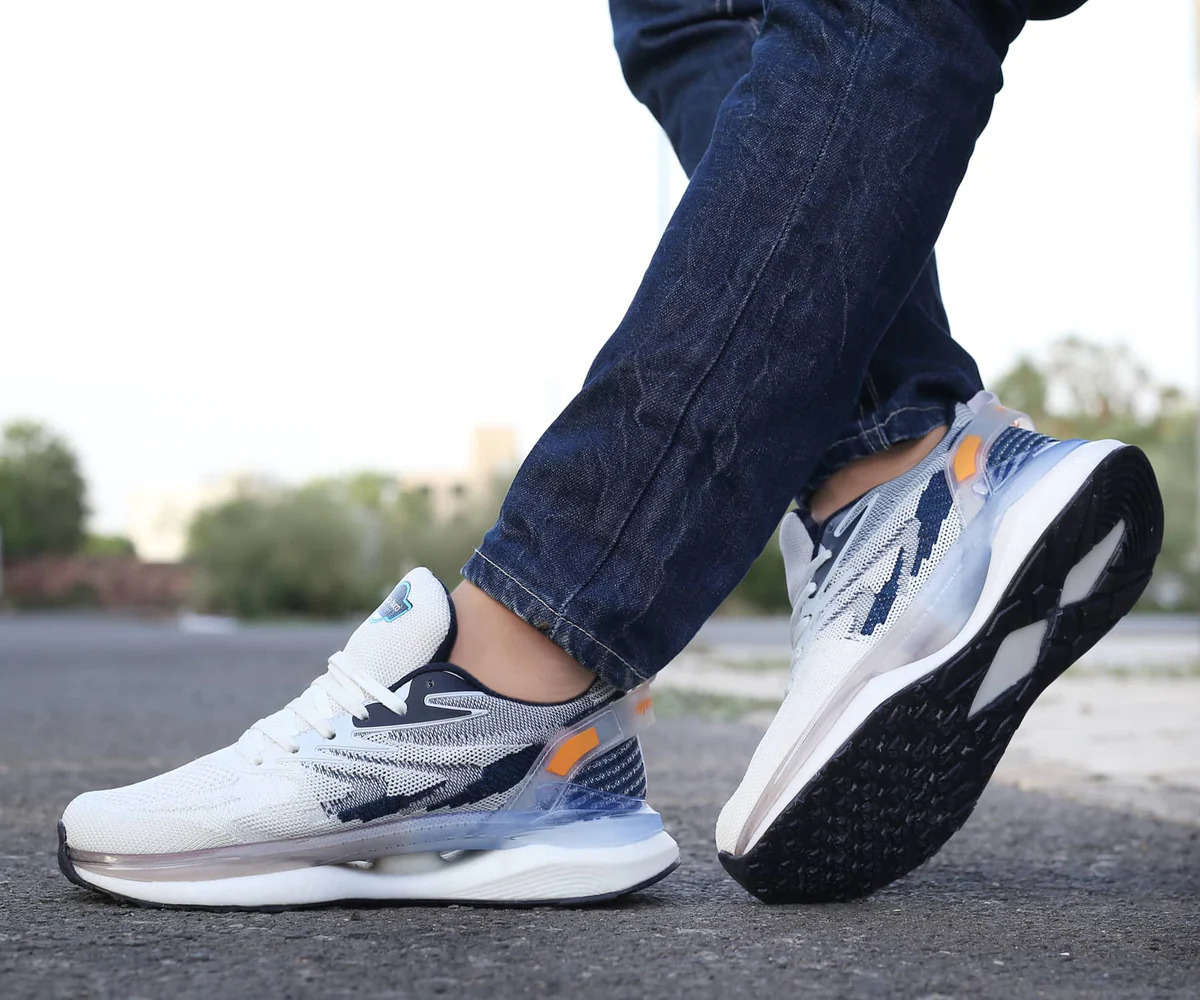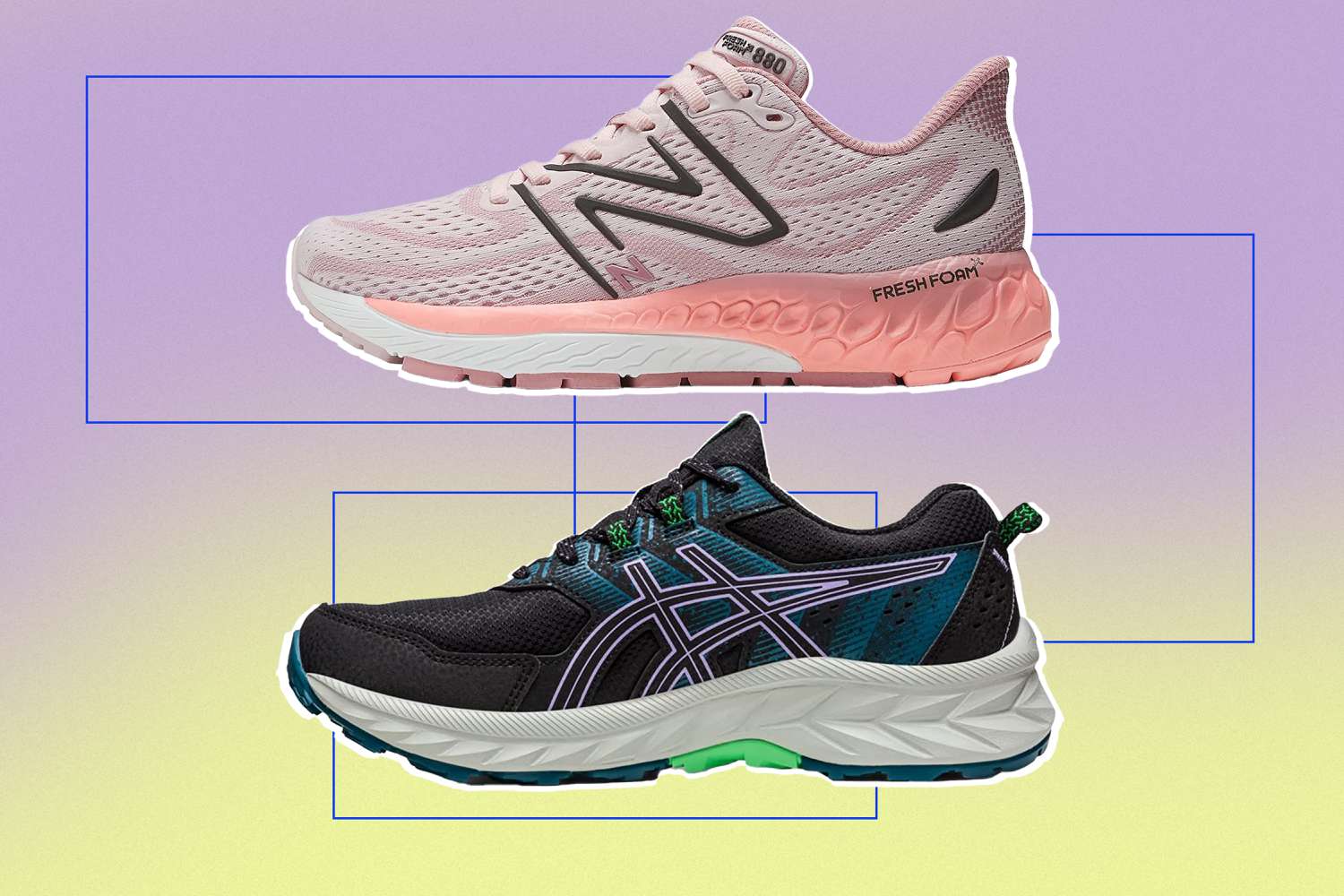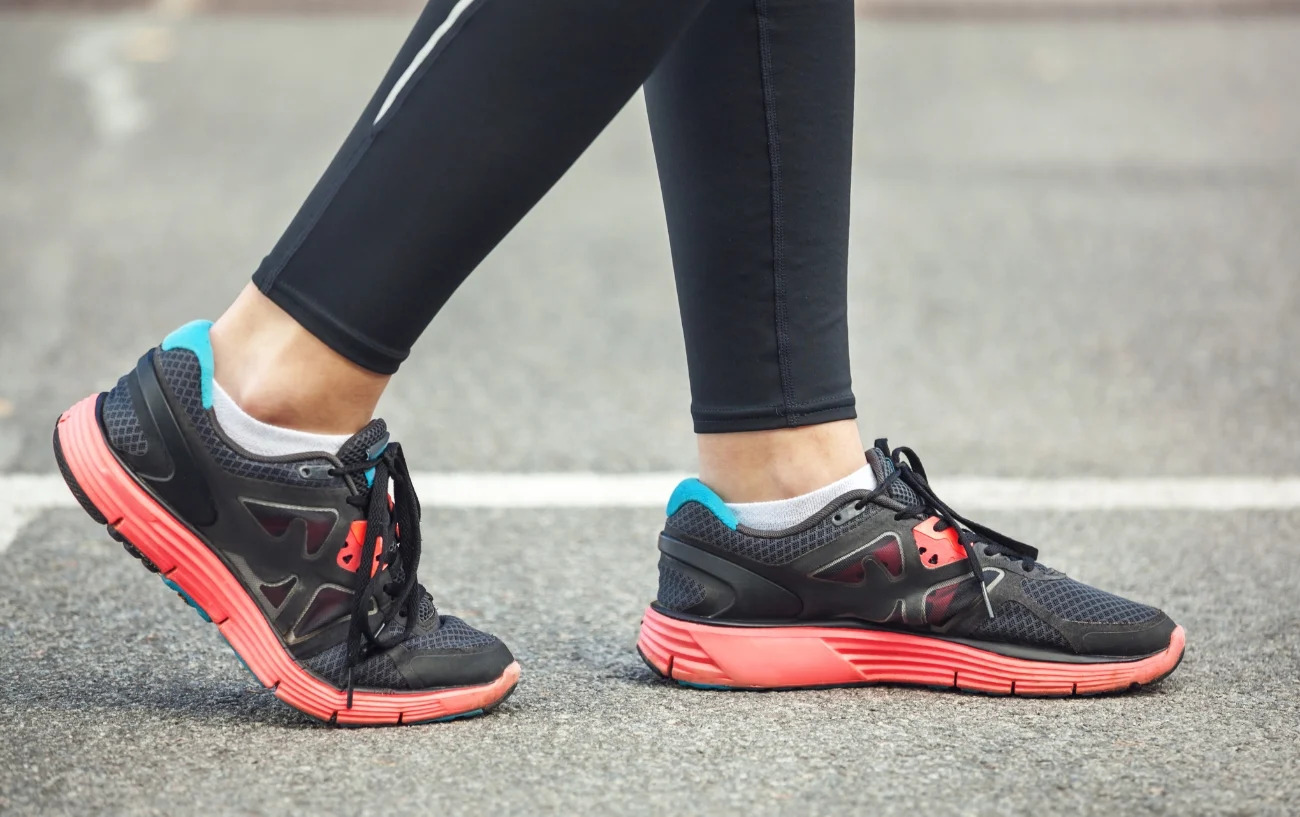

Featured
What Is Neutral Running Shoes
Modified: May 22, 2024
Discover the benefits of neutral running shoes and why they are a must-have for featured athletes. Improve your form and prevent injuries with these specialized shoes.
Introduction
Welcome to the world of running! Whether you are a seasoned marathoner or just getting started with your fitness journey, having the right pair of running shoes is crucial to your comfort and performance. Among the various types of running shoes available, neutral running shoes have gained immense popularity in recent years. In this article, we will delve into the world of neutral running shoes, explore their characteristics, highlight their benefits, provide tips for choosing the right pair, and share common mistakes to avoid.
Neutral running shoes are designed for runners who have a biomechanically efficient stride, meaning that their feet strike the ground with a neutral pronation. Pronation refers to the natural inward rolling motion of the foot that occurs during the gait cycle. Neutral pronation is considered the ideal stride as it ensures even distribution of impact forces and maximizes running efficiency.
What sets neutral running shoes apart from other types is their unique construction and cushioning. Unlike motion control or stability shoes, which are designed to correct overpronation, neutral running shoes offer a more balanced level of support. They provide just the right amount of cushioning and flexibility while allowing the foot to move naturally.
The key characteristics of neutral running shoes include a neutral midsole, moderate arch support, and a flexible outsole. The midsole is typically made of cushioning materials such as EVA (ethylene-vinyl acetate) foam or gel, which provide shock absorption and comfort. The arch support is designed to promote a neutral foot position and prevent excessive rolling inward or outward. The flexible outsole allows for a smooth and natural stride.
So, why choose neutral running shoes? One of the key benefits is their versatility. Neutral shoes are suitable for a wide range of running styles and foot types, making them a popular choice for both beginners and experienced runners. The cushioning and flexibility offered by neutral shoes help reduce the risk of common running injuries, such as shin splints, plantar fasciitis, and knee pain. Additionally, neutral shoes provide a responsive feel, allowing runners to maximize their speed and performance.
Definition of Neutral Running Shoes
Neutral running shoes, also known as neutral pronation shoes, are designed for runners who have a biomechanically efficient stride with neutral pronation. Pronation refers to the natural inward rolling motion of the foot that occurs during the gait cycle. Neutral pronation is considered the ideal foot strike as it evenly distributes impact forces and maximizes running efficiency.
Unlike motion control or stability shoes, which are designed to correct overpronation, neutral running shoes provide a more balanced level of support. They are built to accommodate runners with a neutral foot strike by offering the right amount of cushioning, flexibility, and support.
The main distinguishing feature of neutral running shoes is their neutral midsole. The midsole is the layer of cushioning material between the outsole and the upper part of the shoe. Neutral shoes have a midsole that is neither excessively cushioned nor designed to correct overpronation. Instead, it provides a comfortable amount of cushioning to absorb shock and promote a smooth and natural stride.
In addition to the neutral midsole, neutral running shoes often feature moderate arch support. The arch support helps maintain a neutral foot position, preventing excessive rolling inward or outward. It supports the foot’s natural arch, providing stability without overcorrecting or restricting movement.
The outsole of neutral running shoes is typically designed to be flexible. This allows for the foot to move naturally through the gait cycle, ensuring a smooth transition from heel strike to toe-off. The flexibility of the outsole promotes a more efficient stride and reduces the risk of strain or discomfort.
Overall, the purpose of neutral running shoes is to provide a comfortable and supportive option for runners with a biomechanically efficient stride. They offer the cushioning and flexibility needed to absorb impact and promote proper foot alignment while allowing the foot to move naturally. Neutral running shoes are suitable for a wide range of running styles and foot types, making them a popular choice among runners of all levels of experience.
Characteristics of Neutral Running Shoes
Neutral running shoes have several key characteristics that set them apart from other types of running shoes. These characteristics are designed to provide the optimal combination of cushioning, support, and flexibility for runners with a neutral pronation. Let’s explore these characteristics in more detail:
- Neutral Midsole: The midsole of neutral running shoes is constructed to provide a balanced level of cushioning. It is neither excessively cushioned nor designed to correct overpronation. The neutral midsole offers a comfortable amount of shock absorption and support, enhancing the overall running experience.
- Moderate Arch Support: Neutral running shoes typically feature a moderate level of arch support. This support helps maintain the foot’s natural arch and promotes proper foot alignment. It provides stability without overcorrecting or restricting the foot’s natural movement.
- Flexible Outsole: The outsole of neutral running shoes is designed to be flexible, allowing the foot to move naturally through the gait cycle. The flexibility of the outsole enhances the runner’s ability to achieve a smooth and efficient stride, reducing the risk of strain or discomfort.
- Lightweight Construction: Neutral running shoes often boast a lightweight construction. This not only enhances the overall comfort of the shoes but also allows for faster and more responsive movement. The lighter weight helps to reduce fatigue during longer runs.
- Breathable Upper: The upper part of neutral running shoes is typically made from breathable materials such as mesh or lightweight synthetic fabrics. This allows for proper airflow and helps to keep the feet cool and dry during runs, reducing the risk of discomfort and blisters.
- Anatomical Design: Neutral running shoes are designed to closely mimic the shape and contours of the foot. This anatomical design ensures a snug and secure fit, reducing the likelihood of slippage or friction that can lead to blisters or other foot issues.
- Durability: Neutral running shoes are built to withstand the rigors of regular running. They are constructed with durable materials that can withstand repeated impact and provide long-lasting support and cushioning.
These characteristics work together to create a running shoe specifically tailored for runners with a neutral pronation. The cushioning, support, flexibility, and lightweight construction of neutral running shoes make them a comfortable and reliable choice for runners of all levels, from beginners to seasoned athletes.
Benefits of Using Neutral Running Shoes
Neutral running shoes offer a range of benefits to runners, regardless of their experience level or running goals. These benefits contribute to enhanced comfort, performance, and overall foot health. Let’s explore the advantages of using neutral running shoes:
- Optimal Cushioning: Neutral running shoes provide a balanced level of cushioning, offering just the right amount of shock absorption and impact protection. This reduces the risk of discomfort and promotes a more comfortable running experience.
- Flexibility: The flexible outsole of neutral running shoes allows for a natural range of motion in the foot. It supports a smooth heel-to-toe transition, enhancing running efficiency and reducing the risk of strain or injury.
- Versatility: Neutral running shoes are suitable for a wide range of foot types and running styles. Whether you have a neutral pronation or a slight variation, neutral shoes can accommodate your needs. This versatility makes them a popular choice for beginners and experienced runners alike.
- Improved Stability: While neutral running shoes are not specifically designed for stability, they still offer a moderate level of support. This support helps maintain a stable foot position and reduces the risk of excessive rolling inward (overpronation) or outward (underpronation).
- Reduced Injury Risk: The cushioning and support provided by neutral running shoes help absorb impact forces and distribute them evenly throughout the foot. This helps to reduce the risk of common running injuries, such as shin splints, plantar fasciitis, and knee pain.
- Enhanced Speed and Performance: Neutral running shoes offer a responsive feel, allowing for a more efficient energy transfer with each stride. This can result in improved speed and performance, whether you are training for a race or simply aiming to beat your personal best.
- Comfort and Breathability: Neutral running shoes often feature a breathable upper, allowing for proper airflow and ventilation. This helps to keep the feet cool and dry during runs, reducing discomfort and the risk of blisters or other foot issues.
- Long-Term Durability: Neutral running shoes are constructed with durable materials designed to withstand the repeated impact of running. This ensures that the shoes provide long-lasting support and cushioning, even with regular use.
Overall, neutral running shoes offer a combination of cushioning, support, flexibility, and versatility that can significantly enhance the overall running experience. Whether you are a recreational jogger or a competitive athlete, investing in a pair of neutral running shoes can provide you with the comfort, stability, and performance you need to reach your running goals.
How to Choose the Right Neutral Running Shoes
Choosing the right pair of neutral running shoes is essential to ensure a comfortable and supportive running experience. With various options available in the market, it’s important to consider certain factors when making your selection. Here are some key steps to help you choose the right neutral running shoes:
- Understand Your Foot Type: Determine your foot type to find a shoe that suits your specific needs. While neutral running shoes are designed for runners with a neutral pronation, understanding factors such as arch height and foot width can further refine your search.
- Get a Professional Gait Analysis: Visit a specialty running store or consult a professional to get a gait analysis. This analysis helps identify any abnormalities in your running gait and provides insights into the level of support and cushioning you may require.
- Try Before You Buy: Try on several different pairs of neutral running shoes to find the best fit. Remember to wear the socks you typically use for running and try the shoes on both feet. Walk or jog around the store to assess comfort, support, and overall fit.
- Consider Cushioning: Consider the level of cushioning that suits your running style and preferences. Some runners prefer a softer, more plush cushioning, while others prefer a firmer and more responsive feel. Find the right balance of cushioning that provides comfort without sacrificing responsiveness.
- Evaluate Arch Support: Assess the arch support provided by the shoes. While neutral running shoes have a moderate level of arch support, it’s important to ensure that it aligns well with your natural foot arch. The support should feel comfortable and promote proper foot alignment during your runs.
- Check Heel and Toe Fit: Pay attention to the fit around the heel and toe areas of the shoe. The heel should feel snug and secure without any slippage, while the toes should have enough room to wiggle comfortably. Avoid shoes that feel too tight or cause any discomfort.
- Consider the Shoe’s Weight: Take into account the weight of the shoes, as it can affect your running performance. Lighter shoes can provide a faster and more responsive feel, while slightly heavier shoes may offer more durability and cushioning. Find a balance that aligns with your running goals.
- Read Reviews and Seek Recommendations: Read customer reviews and seek recommendations from other runners to gather insights about the performance and durability of different neutral running shoe models. This can help you narrow down your options and make an informed decision.
Remember that choosing the right neutral running shoes is a personal process. What works for one runner may not work for another. It’s important to prioritize comfort, support, and fit when making your selection. The right pair of neutral running shoes will provide the necessary cushioning, flexibility, and support to help you enjoy your runs and perform at your best.
Common Mistakes to Avoid When Selecting Neutral Running Shoes
Choosing the right pair of neutral running shoes can be a daunting task, especially with the wide range of options available. To ensure you make an informed decision, it’s important to avoid common mistakes that many runners make when selecting their shoes. Here are some key mistakes to avoid:
- Ignoring Your Foot Mechanics: One of the most common mistakes is ignoring your foot mechanics. Understanding your foot type, whether you have high arches, flat feet, or any other specific characteristics, is essential in finding the right neutral running shoe that caters to your needs.
- Getting Caught Up in Brand Names: While popular brands may have a reputation for quality, it’s important not to get too caught up in brand names alone. Every runner’s needs and foot shape are unique. Be open to trying different brands and models to find the shoe that works best for you.
- Choosing Style over Fit: It can be tempting to choose a shoe based on its stylish design or color, but prioritizing style over fit is a mistake. Focus on finding a shoe that fits well and provides the necessary comfort and support for your feet. Style should be a secondary consideration.
- Skipping Professional Advice: Avoid skipping a professional gait analysis or consultation at a specialty running store. These experts can assess your gait, offer personalized recommendations, and guide you toward the right pair of neutral running shoes based on your foot mechanics and running style.
- Not Trying on Multiple Pairs: Trying on multiple pairs of neutral running shoes is crucial in finding the best fit. Avoid the mistake of settling for the first pair that feels okay. Take the time to try on different models, brands, and sizes to find the one that offers the best combination of comfort and support.
- Not Testing the Shoes Properly: Merely walking around in the store is often not enough to accurately assess a shoe’s performance. Take the shoes for a test run if possible, or mimic running movements to get a better sense of how they feel and respond during activity.
- Focusing Solely on Price: While budget considerations are important, solely focusing on price can lead to compromising on comfort and support. It’s worth investing in a quality pair of neutral running shoes that provide the necessary cushioning and stability, as they can help prevent injuries and improve your running experience in the long run.
- Ignoring Feedback and Reviews: Don’t ignore customer feedback and reviews when researching different neutral running shoe options. Learn from the experiences of others and consider their insights in your decision-making process. However, also keep in mind that everyone’s preferences and needs are different.
By avoiding these common mistakes, you can increase your chances of finding the right pair of neutral running shoes that align with your individual needs, enhancing your comfort and performance during runs. Remember, selecting the right shoes is a personal process, and the focus should always be on finding the best fit and support for your feet.
Neutral Running Tips and Best Practices
Running with neutral running shoes requires proper form, technique, and care to maximize your performance and prevent injuries. Here are some helpful tips and best practices to keep in mind for a successful neutral running experience:
- Focus on Proper Form: Maintain an upright posture while running and focus on a midfoot strike. Avoid overstriding and landing on your heels, as this can disrupt your natural gait and increase the risk of injury. Keep your stride length natural and comfortable.
- Gradually Increase Mileage: If you’re new to running or transitioning to neutral running shoes, gradually increase your mileage to allow your body to adapt. Start with shorter distances and gradually increase the duration and intensity of your runs. This will help prevent overuse injuries and improve your overall running endurance.
- Alternate Running Surfaces: Vary your running surfaces to engage different muscles and reduce the risk of repetitive strain injuries. Mix up your runs between pavement, trails, grass, and tracks to provide different levels of cushioning and challenge your body in different ways.
- Listen to Your Body: Pay attention to any signs of discomfort or pain during your runs. If you experience persistent pain or discomfort, especially in your joints or muscles, it’s important to give yourself time to rest and recover. Pushing through pain can lead to more serious injuries.
- Warm Up and Cool Down: Always incorporate warm-up and cool-down exercises into your running routine. This helps prepare your body for the demands of running and promotes better recovery. Prioritize dynamic stretches and exercises that target the muscles used during running.
- Strength Train: Include strength training exercises in your overall fitness regimen. By strengthening your core, hips, and lower body muscles, you enhance your overall running performance and reduce the risk of common running injuries.
- Replace Your Shoes Regularly: Pay attention to the wear and tear of your neutral running shoes. As a general guideline, replace your shoes every 300-500 miles or when you notice significant signs of wear. Worn-out shoes can lead to reduced cushioning and support, increasing the risk of injuries.
- Avoid Overtraining: Rest and recovery are crucial components of training. Allow your body time to recover after intense workouts or races. Overtraining can lead to fatigue, diminished performance, and an increased risk of injuries. Listen to your body’s signals and give yourself rest days as needed.
- Stay Hydrated and Fuel Well: Proper hydration and nutrition are important for optimal performance and recovery. Drink enough water before, during, and after your runs, especially during hot weather. Fuel your body with a balanced diet that includes carbohydrates, protein, healthy fats, and plenty of fruits and vegetables.
- Continually Assess Your Running Form: Regularly assess your running form to ensure you’re maintaining a neutral foot strike and proper alignment. Periodically consult a running coach or record yourself running to analyze your form and make adjustments if necessary.
By following these tips and best practices, you can enhance your neutral running experience, reduce the risk of injuries, and improve your overall running performance. Remember to listen to your body, be consistent, and enjoy the journey as you pursue your running goals.
Conclusion
Choosing the right pair of neutral running shoes is a crucial step in ensuring a comfortable and supportive running experience. Neutral running shoes, designed for those with a biomechanically efficient stride and neutral pronation, offer an optimal combination of cushioning, flexibility, and support. Their versatility, cushioning, stability, and responsiveness make them a popular choice among runners of all levels.
When selecting neutral running shoes, it’s important to consider factors such as your foot type, fit, cushioning, arch support, and durability. Avoid common mistakes like neglecting your foot mechanics, getting caught up in brand names, or choosing style over fit. Seek professional advice, try on multiple pairs, and test them properly to find the perfect fit for your feet.
Using neutral running shoes comes with various benefits, including enhanced comfort, reduced risk of injuries, improved stability, and increased speed and performance. By following best practices and tips, such as focusing on proper form, gradually increasing mileage, and incorporating strength training, you can optimize your neutral running experience and avoid potential issues.
Remember to listen to your body, prioritize rest and recovery, and pay attention to any signs of discomfort or pain. Regularly replace your worn-out shoes, stay hydrated, and fuel your body well to support your running endeavors.
Whether you’re a beginner or an experienced runner, choosing the right pair of neutral running shoes and following best practices will help you enjoy comfortable and successful runs. Embrace the journey, be consistent, and continue to push yourself towards your running goals with the support and comfort that neutral running shoes provide.

